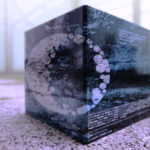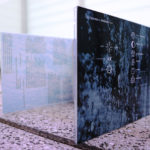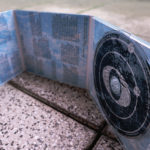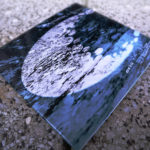Intelligent Dissonances in Improvisation (Percorsi Musicali interview)
Group improvisation as triangulation? Fierce solidarity? Wet, squishy electrochemical processes? And science fiction, and the fictions of science? In Ettore Garzia’s Percorsi Musicali article, Garzia asks me about my thoughts on “art and on the way we should approach the reality of the twenty-first century”:
As for the present-day hellfire 2.0 of the world, whether from strong-men political figures, or the next tech breakthrough, we’re surrounded by promises of simple solutions, and seductive stories of salvation and redemption. In this context, creative peoples, I think, can offer counter-narratives to complicate and refute those easy solutions; to instead help us face the complex, the contradictory, the uncertain and ambiguous.
As for me, empathy, compassion and solidarity remain the reasons I continue to engage with interactive, social music practices and communities. But these practices and communities are flawed and imperfect—they are deeply, deeply human after all—and I think it’s important that we remain aware of the possibility of violence and abuse in our practices, and work to take consent, power, conflict, desire and agency seriously. [Read the rest…]
And elsewhere Garzia asks about the albums Of Life, Recombinant, and Juno 3’s upcoming release:
Proxemics spreads electroacoustic power and a sense of movement, thanks to many elements, the fragmentation of the guitar, the plethora of unnatural sounds brought into play by Thomas and the small and intermittent manipulations of Lara’s sax. I discover a narration inside, but also a void, a melancholic vein. Is that so?
Lara [Jones] and Pat [Thomas] are doing some of the most exciting work in enrolling electronics into improvised performance right now. Their approaches, as different as they are, are informed by present-day technological developments while being irreverent towards those same tech enterprises; they are as avant-garde as they come while deeply engaging with the electronic dance vernacular.
I also hear that messy, contradictory, rolling narrative side to Juno 3, but, more than melancholy, I hear, with Proxemics, something angrier and confrontational—I feel, at times, that the music spits and snarls. [Read the rest…]
Read the rest of the article to catch me talking about how the works of certain writers and filmmakers have affected my work in refracting improvisation through narrative techniques and tropes; the reason for choosing the trio context (and the differences between Eris 136199, Juno 3 and Gonggong 225088); and whether I would ever return to constructing musical automata in this post-ChatGPT condition.
Selected Discography

Personnel: Han-earl Park (guitar), Lara Jones (saxophone and electronics) and Pat Thomas (electronics).
Track listing: Derealization I (4:07), Derealization II (4:57), Derealization III (3:52), Derealization IV (6:19), Derealization V (5:55), Derealization VI (3:47), Proxemics I (5:05), Proxemics II (3:54), Proxemics III (6:10), Proxemics IV (7:15), Proxemics V (6:10), Proxemics VI: Rumble (5:13). Total duration: 62:44.
© and ℗ 2025 Han-earl Park.
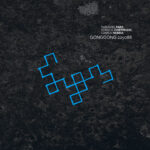
Gonggong 225088 (wa008) [details…]
Personnel: Han-earl Park (guitar), Yorgos Dimitriadis (percussion and electronics) and Camila Nebbia (saxophone).
Track listing: Autopoiesis I (≥ 10:14), Autopoiesis II (≥ 4:29), Niche Shift I (16:09), Niche Shift II (≥ 4:45), Niche Shift III (4:35), Niche Shift IV (≥ 12:52), Autopoiesis III (3:26), Autopoiesis IV (≥ 5:03), Autopoiesis V (≥ 3:17), Autopoiesis VI (3:37). Total duration ≥ 70:14.
© 2024 Han-earl Park. ℗ 2024 Waveform Alphabet.
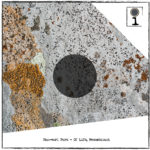
Of Life, Recombinant (NEWJAiM9) [details…]
Personnel: Han-earl Park (guitar) with Anne Wellmer (voice on track 4).
Track listing: Game: Mutation (5:38); Naught Opportune (≥ 10:42); Are Variant (≥ 8:06); Of Life, Recombinant (≥ 29:22). Total duration ≥ 53:48.
© 2021 NEWJAiM Recordings.
℗ 2021 Han-earl Park.
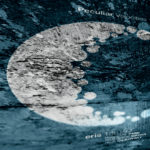
Peculiar Velocities (BAF002) [details…]
Personnel: Han-earl Park (guitar), Catherine Sikora (saxophone) and Nick Didkovsky (guitar).
Track listing: Ballad of Tensegrity I (≥ 5:12), Ballad of Tensegrity II (2:28), Peculiar Velocities I (3:46), Peculiar Velocities II (3:36), Sleeping Dragon (5:22), D-Loop I (≥ 6:16), D-Loop II (5:13), Polytely I (≥ 5:01), Polytely II: Breakdown (5:33), Anagnorisis I (2:09), Anagnorisis II (2:19). Total duration ≥ 46:54.
© + ℗ 2020 Han-earl Park.
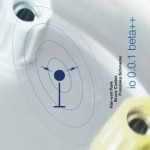
io 0.0.1 beta++ (SLAMCD 531) [details…]
Personnel: io 0.0.1 beta++ (itself), Han-earl Park (guitar), Bruce Coates (alto and sopranino saxophones) and Franziska Schroeder (soprano saxophone).
Track listing: Pioneer: Variance (11:52); Pioneer: Dance (13:13); Ground-Based Telemetry (1:42); Discovery: Intermodulation (9:08); Discovery: Decay (5:08); 4G (0:59); Laplace: Perturbation (10:21); Laplace: Instability (3:08); Return Trajectory (8:24). Total duration: 63:57.
© 2011 Han-earl Park. ℗ 2011 SLAM Productions.
Mixing noisy, pretty, gentle and disorderly peculiar music
Wondering what mixing strategy could possibly work for your recording of noisy, pretty, gentle and disorderly peculiar music? Hit me up if your left-of-field recording is in need of some in-the-box (with a little out-of-the-box thinking) mixing work.
recordings featured

Gonggong 225088 (wa008) [details…]
Personnel: Han-earl Park (guitar), Yorgos Dimitriadis (percussion and electronics) and Camila Nebbia (saxophone).
Track listing: Autopoiesis I (≥ 10:14), Autopoiesis II (≥ 4:29), Niche Shift I (16:09), Niche Shift II (≥ 4:45), Niche Shift III (4:35), Niche Shift IV (≥ 12:52), Autopoiesis III (3:26), Autopoiesis IV (≥ 5:03), Autopoiesis V (≥ 3:17), Autopoiesis VI (3:37). Total duration ≥ 70:14.
© 2024 Han-earl Park. ℗ 2024 Waveform Alphabet.

Of Life, Recombinant (NEWJAiM9) [details…]
Personnel: Han-earl Park (guitar) with Anne Wellmer (voice on track 4).
Track listing: Game: Mutation (5:38); Naught Opportune (≥ 10:42); Are Variant (≥ 8:06); Of Life, Recombinant (≥ 29:22). Total duration ≥ 53:48.
© 2021 NEWJAiM Recordings.
℗ 2021 Han-earl Park.

Peculiar Velocities (BAF002) [details…]
Personnel: Han-earl Park (guitar), Catherine Sikora (saxophone) and Nick Didkovsky (guitar).
Track listing: Ballad of Tensegrity I (≥ 5:12), Ballad of Tensegrity II (2:28), Peculiar Velocities I (3:46), Peculiar Velocities II (3:36), Sleeping Dragon (5:22), D-Loop I (≥ 6:16), D-Loop II (5:13), Polytely I (≥ 5:01), Polytely II: Breakdown (5:33), Anagnorisis I (2:09), Anagnorisis II (2:19). Total duration ≥ 46:54.
© + ℗ 2020 Han-earl Park.
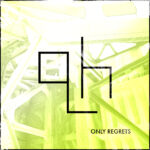
Personnel: Quentin Tolimieri (synthesizers), Luca Marini (drums) and Han-earl Park (guitar).
Track listing: Pattern Clash (18:50), Linoleum Studs (3:10). Total duration: 22:00.
© + ℗ 2023 Tolimieri/Marini/Park.
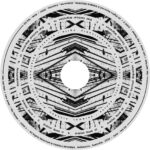
Personnel: Han-earl Park (guitar), Lara Jones (saxophone and electronics) and Pat Thomas (electronics).
Track listing: Orbital Dusk I (6:04), Orbital Dusk II (4:20), Orbital Dusk III (2:29), Orbital Dusk IV (6:03), Diel Vertical Migration I (6:31), Diel Vertical Migration II (4:38), Diel Vertical Migration III (4:33), Diel Vertical Migration IV (7:36), Metastability (7:24). Total duration: 49:36.
© and ℗ 2023 Ramble Records.
update
03–02-24: update Gonggong 225088 (wa008) info with track listing and artwork.
The unknowability of connection, and a little science fiction (Free Jazz: Sunday Interview)
Violence and cruelty? Fantastical, twisted, dark, deeply affectionate humanism? Improvisation as embodiment and personification? Place, subjectivity and interiority? As part of the Free Jazz: Sunday Interview, in response to a question about the joy in improvised music, I talk about the “ambiguity of action and reaction; the unknowability of connection”, and that:
The pleasure of play is when trust is a choice, and we choose to trust. When we don’t take each other for granted. When we are fully cognizant of the potential for violence and cruelty, but we choose to take compassion, affinity, consent, desire and agency seriously.
What quality do you most admire in the musicians you perform with?
It’s not one thing for me. It’s never one thing. What you bring to the stage is your humanity—messy, beautiful, dysfunctional, joyous, contradictory, mutable, stubborn, insecure, fractious, but also empathetic and compassionate.
Each musician is different, and each group is different. It’s good, I think, to be sensitive to who the group is, and what the group could be; to be open to what is possible, but cognizant of the differences and inequalities that exist in any ensemble. [Read the rest…]
By the way, I responded to the question, “if you could resurrect a musician to perform with, who would it be?” by saying that “I could only answer that with a cautionary piece of science fiction.” Here’s my draft sci-fi answer that I did not, in the end, hand in to Paul Acquaro, editor at Free Jazz:
An answer by way of a cautionary story:
The noise was unbearable, the light, harsh, blinding. And then.
The machine went silent, dark. The arcs of electricity now only a vague echo of persistent vision. The only sign that there had been unnatural activity was the ozone in the air. As my eyes slowly adjusted, I could make out the bewigged corpse—pale, contorted—but undead presently on the table.
And so now the doubts: What would the masses of the cultured think of their celebrated composer reanimated? Would, as I had hoped in exhuming their idol, they—the patriarchal, white-supremacist colonialists—(re)examine their dreams and pleasures? Would they recognize the violent scaffolding around which they, and their institutions, erected European Liberalism? Or would the Culture Machine masticate these truths, and come to admire their Zombified Idol as a Strongman-Savior in this Post-Truth condition (a Wolfgang Frickin’ Trump)?
Should I have reanimated instead some marginalized or minoritized artist? One who had been forgotten, perhaps, exoticized or tokenized, or footnoted in our Introduction To Music textbook? What would I tell them as they woke to The World 2.0? What would they see? What would the Culture-Industrial Complex of Western Modernity do to that undead being? How would that Complex (re)rationalize the artist’s story and their existence and their purpose?
If you’d like to know more about my concerns about the role of narrative and narrative form in improvisation, or my interest in shifting improvisative play towards a kind of acting, please read the rest of the interview.
Rerelease: Parabiosis
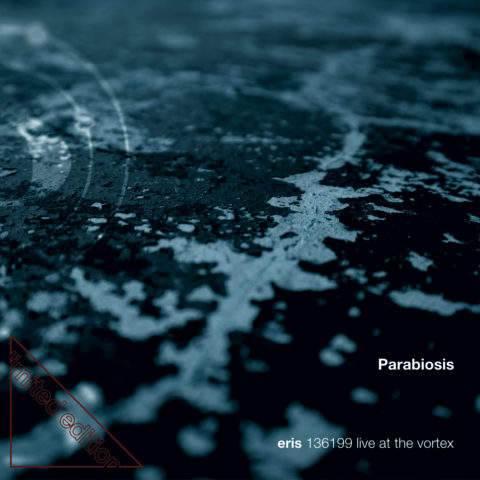
Update: download no longer available. Thank you so much for your support, and thank you so very much for listening.
If you missed the rereleases of these limited edition recordings, and would like to catch them next time they become available, please sign-up to my newsletter to stay up-to-date. I’d also like to invite you to listen to Eris 136199, Peculiar Velocities, and 𝑿: Eris 136199 Decennial which are all still available.
Because you asked for it, we have been rereleasing some of Eris 136199’s limited-edition recordings. As the final part of celebrating Eris’ decennial, available from today for a limited time is Parabiosis: Eris 136199 Live at The Vortex.
Recorded live at The Vortex Jazz Club at the start of Eris’ 2020 tour, this digital-only album was originally made available exclusively to our 2020 Kickstarter-backers. We’re now making this available for a short time for everyone who missed out the first time.
Download: €6.00 minimum (‘name your price’).
Album available to stream via the free Bandcamp app, and to download in multiple formats including lossless.
And please remember that 𝑿: Eris 136199 Decennial is still available, and that you have only a couple of more weeks to download Problematica before that goes back to where all the good limited editions go.
Celebrate 10 years of Eris 136199

𝑿: Eris 136199 Decennial [details…]
Personnel: Han-earl Park (guitar), Catherine Sikora (saxophone) and Nick Didkovsky (guitar).
Track listing: Let 𝑿 (7:56), Problematica I.ii (remastered) (8:34). Total duration: 16:30.
© + ℗ 2022 Han-earl Park.
Also by Eris 136199

Peculiar Velocities (BAF002) [details…]
Personnel: Han-earl Park (guitar), Catherine Sikora (saxophone) and Nick Didkovsky (guitar).
Track listing: Ballad of Tensegrity I (≥ 5:12), Ballad of Tensegrity II (2:28), Peculiar Velocities I (3:46), Peculiar Velocities II (3:36), Sleeping Dragon (5:22), D-Loop I (≥ 6:16), D-Loop II (5:13), Polytely I (≥ 5:01), Polytely II: Breakdown (5:33), Anagnorisis I (2:09), Anagnorisis II (2:19). Total duration ≥ 46:54.
© + ℗ 2020 Han-earl Park.
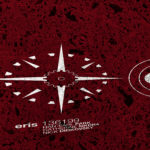
Eris 136199 (BAF001) [details…]
Personnel: Han-earl Park (guitar), Catherine Sikora (saxophone) and Nick Didkovsky (guitar).
Track listing: Therianthropy I (≥ 3:43), Therianthropy II (8:56), Therianthropy III (3:55), Therianthropy IV (6:30), Adaptive Radiation I (6:44), Adaptive Radiation II (8:48), Adaptive Radiation III (5:54), Universal Greebly (10:58), Hypnagogia I (8:03), Hypnagogia II (4:45). Total duration ≥ 68:25.
© + ℗ 2018 Han-earl Park.
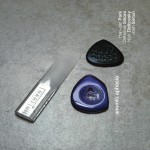
Anomic Aphasia (SLAMCD 559) [details…]
Personnel: Han-earl Park (guitar), Catherine Sikora (tenor and soprano saxophones), Nick Didkovsky (guitar; tracks 1 and 5), and Josh Sinton (baritone saxophone and bass clarinet; tracks 2–4).
Track listing: Monopod (27:19), Pleonasm (Metis 9) (17:08), Flying Rods (Metis 9) (7:41), Hydraphon (7:34), StopCock (10:54). Total duration: 70:33.
© 2015 Han-earl Park. ℗ 2015 SLAM Productions.
updates
01-01-23: No longer available for download.
Rerelease: Problematica
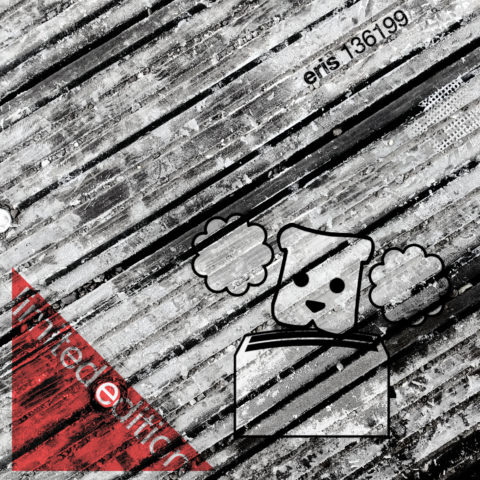
Update: download no longer available. Thank you so much for your support, and thanks so much for listening!
Continuing Eris 136199’s decennial, we’ve just rereleased Eris 136199: Problematica.
This digital-only album was originally made available exclusively to our Kickstarter-backers in 2018. We’re now making this available for a short time for everyone who missed out the first time.
Download: €5.00 minimum (‘name your price’).
Album available to stream via the free Bandcamp app, and to download in multiple formats including lossless.
And please remember that 𝑿: Eris 136199 Decennial is still available, and that you have only a couple of more weeks to download Cryptogenic Animals before that goes back to where all the good limited editions go.
Celebrate 10 years of Eris 136199

𝑿: Eris 136199 Decennial [details…]
Personnel: Han-earl Park (guitar), Catherine Sikora (saxophone) and Nick Didkovsky (guitar).
Track listing: Let 𝑿 (7:56), Problematica I.ii (remastered) (8:34). Total duration: 16:30.
© + ℗ 2022 Han-earl Park.
Also by Eris 136199

Peculiar Velocities (BAF002) [details…]
Personnel: Han-earl Park (guitar), Catherine Sikora (saxophone) and Nick Didkovsky (guitar).
Track listing: Ballad of Tensegrity I (≥ 5:12), Ballad of Tensegrity II (2:28), Peculiar Velocities I (3:46), Peculiar Velocities II (3:36), Sleeping Dragon (5:22), D-Loop I (≥ 6:16), D-Loop II (5:13), Polytely I (≥ 5:01), Polytely II: Breakdown (5:33), Anagnorisis I (2:09), Anagnorisis II (2:19). Total duration ≥ 46:54.
© + ℗ 2020 Han-earl Park.

Eris 136199 (BAF001) [details…]
Personnel: Han-earl Park (guitar), Catherine Sikora (saxophone) and Nick Didkovsky (guitar).
Track listing: Therianthropy I (≥ 3:43), Therianthropy II (8:56), Therianthropy III (3:55), Therianthropy IV (6:30), Adaptive Radiation I (6:44), Adaptive Radiation II (8:48), Adaptive Radiation III (5:54), Universal Greebly (10:58), Hypnagogia I (8:03), Hypnagogia II (4:45). Total duration ≥ 68:25.
© + ℗ 2018 Han-earl Park.

Anomic Aphasia (SLAMCD 559) [details…]
Personnel: Han-earl Park (guitar), Catherine Sikora (tenor and soprano saxophones), Nick Didkovsky (guitar; tracks 1 and 5), and Josh Sinton (baritone saxophone and bass clarinet; tracks 2–4).
Track listing: Monopod (27:19), Pleonasm (Metis 9) (17:08), Flying Rods (Metis 9) (7:41), Hydraphon (7:34), StopCock (10:54). Total duration: 70:33.
© 2015 Han-earl Park. ℗ 2015 SLAM Productions.
updates
11-27-22: No longer available for download.
Rerelease the Cryptogenic Animals!
Update: download no longer available. Thank you so much for your support, and thanks so much for listening!
Rereleased, and available for a limited time: Eris 136199’s Cryptogenic Animals originally released in 2018!
Folk (including many new listeners who’d missed out on the crowdfunders) have, over the last few years, been asking about the availability of Eris 136199’s limited-edition recordings. For the trio’s decennial we’ll be rolling a few of these out again. The digital-only albums Problematica (recorded at Out Front, Derby), and Parabiosis (The Vortex Jazz Club, London) will be rereleased in the following months, but available from today is Cryptogenic Animals recorded at Xposed Club, Cheltenham, November 2017.
Download: €5.00 minimum (‘name your price’).
Album available to stream via the free Bandcamp app, and to download in multiple formats including lossless.
Description
Repurposing melodic atoms? Dueling amplifiers? By turns riding and submerging into reverberant spaces? Here’s how I described the recording on its release in 2018:
While the Copenhagen and Newcastle performances are documented in an upcoming album by the trio Eris 136199, Cryptogenic Animals, recorded in Cheltenham between those dates, offers a unique opportunity to track the evolution of this improvising trio during the 2017 European tour.
Take for example the synchronized, collective jump-cuts and smash-cuts that populates the Copenhagen improvisations. These are all but absent by the time the trio perform three night later in Newcastle where, in their place, you find the group breathing together; moving and transitioning in larger scales. On Cryptogenic Animals, recorded the night after Copenhagen, and two before Newcastle, you can hear both these improvisative tactics operating in fascinating, contrasting ways.
You can also hear saxophonist Catherine Sikora revisit and rework some of the melodic atoms played in Copenhagen; trying them against the contrasting acoustic environments. And, adapting to the disparate amplification available in Cheltenham (a diminutive solid-state amp against a 112 Fender), Nick Didkovsky and Han-earl Park reexamine the freedoms and restraints of the two-guitar context; an experience that would inform into their approach in Newcastle in significant ways.
With the rich acoustics of the Francis Close Hall Chapel, the Cheltenham performance is, in contrast to the frenetic and biting Copenhagen and Newcastle performances, unhurried and lush. Cryptogenic Animals documents a fascinating transitional point in the group’s behavior, showcasing the trio’s adaptability to context, and creativity born from the contingent.
Celebrate 10 years of Eris 136199

𝑿: Eris 136199 Decennial [details…]
Personnel: Han-earl Park (guitar), Catherine Sikora (saxophone) and Nick Didkovsky (guitar).
Track listing: Let 𝑿 (7:56), Problematica I.ii (remastered) (8:34). Total duration: 16:30.
© + ℗ 2022 Han-earl Park.
Also by Eris 136199

Peculiar Velocities (BAF002) [details…]
Personnel: Han-earl Park (guitar), Catherine Sikora (saxophone) and Nick Didkovsky (guitar).
Track listing: Ballad of Tensegrity I (≥ 5:12), Ballad of Tensegrity II (2:28), Peculiar Velocities I (3:46), Peculiar Velocities II (3:36), Sleeping Dragon (5:22), D-Loop I (≥ 6:16), D-Loop II (5:13), Polytely I (≥ 5:01), Polytely II: Breakdown (5:33), Anagnorisis I (2:09), Anagnorisis II (2:19). Total duration ≥ 46:54.
© + ℗ 2020 Han-earl Park.

Eris 136199 (BAF001) [details…]
Personnel: Han-earl Park (guitar), Catherine Sikora (saxophone) and Nick Didkovsky (guitar).
Track listing: Therianthropy I (≥ 3:43), Therianthropy II (8:56), Therianthropy III (3:55), Therianthropy IV (6:30), Adaptive Radiation I (6:44), Adaptive Radiation II (8:48), Adaptive Radiation III (5:54), Universal Greebly (10:58), Hypnagogia I (8:03), Hypnagogia II (4:45). Total duration ≥ 68:25.
© + ℗ 2018 Han-earl Park.

Anomic Aphasia (SLAMCD 559) [details…]
Personnel: Han-earl Park (guitar), Catherine Sikora (tenor and soprano saxophones), Nick Didkovsky (guitar; tracks 1 and 5), and Josh Sinton (baritone saxophone and bass clarinet; tracks 2–4).
Track listing: Monopod (27:19), Pleonasm (Metis 9) (17:08), Flying Rods (Metis 9) (7:41), Hydraphon (7:34), StopCock (10:54). Total duration: 70:33.
© 2015 Han-earl Park. ℗ 2015 SLAM Productions.
updates
09-14-22: no longer available.
X: Eris 136199 Decennial
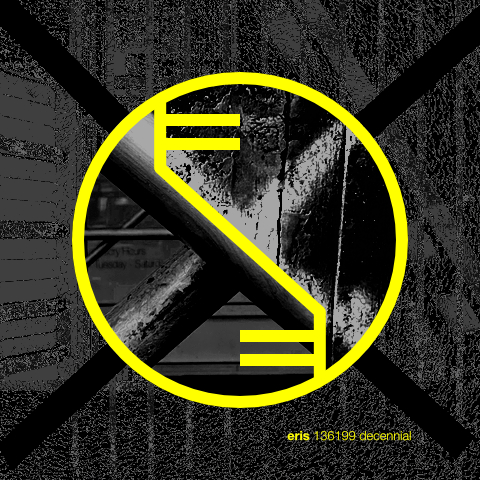
Celebrate 10 years of Eris 136199 with the trio’s new EP, 𝑿: Eris 136199 Decennial!
On May 27, 2012 at ABC No Rio, NYC, Catherine Sikora, Nick Didkovsky and I took the stage for the first time as a trio. Ten years later, in celebration of this ensemble, Catherine, Nick and I have created a long-distance improvisative collage.
Download: €3.00 minimum (‘name your price’).
EP available to stream via the free Bandcamp app, and to download in multiple formats including lossless.
description
I recall the exact moment I knew this group was something special, when, fifteen minutes into the 40 minute improvisation, the broken-machinery-rattle-buzzes-and-bumps of the guitars were joined by the melismatic lines of the soprano saxophone. And the trio refused to collapse that juxtaposition—letting that idiomatic dissonance remain standing—creating its own logic by force-of-will.
— Han-earl Park
Ten years ago, May 27, 2012, at ABC No Rio in the Lower East Side, Han-earl Park, Catherine Sikora and Nick Didkovsky took the stage for the first time as a trio. Before the events of 2020, the plan had been for the trio, after the release of a new album, to go on tour. But, as the rogue piece of genetic material danced its dance with humanity, the trio had to rethink that plan.
Park selected an excerpt from the recording of the trio’s Derby, 2017 performance to serve as the foundation for a new piece by the trio. He created custom music-minus-one mixes starting with a mix without the saxophone part. Sikora then recorded a new saxophone part. Park then created a mix with this new saxophone part, but without Didkovsky’s 2017 guitar. Didkovsky then recorded a new guitar part, and finally Park recorded a new guitar part to replace his 2017 performance.
So fascinating—it is clearly, undeniably Eris, but also not Eris—the components are all there but the interactions/atmosphere is totally different.
— Catherine Sikora
It’s like peering into a parallel universe and listening to what Eris in that world sounds like.
— Nick Didkovsky
And for the ‘B-side,’ the EP includes a remastered edition of the original source recording made in Derby five years ago.
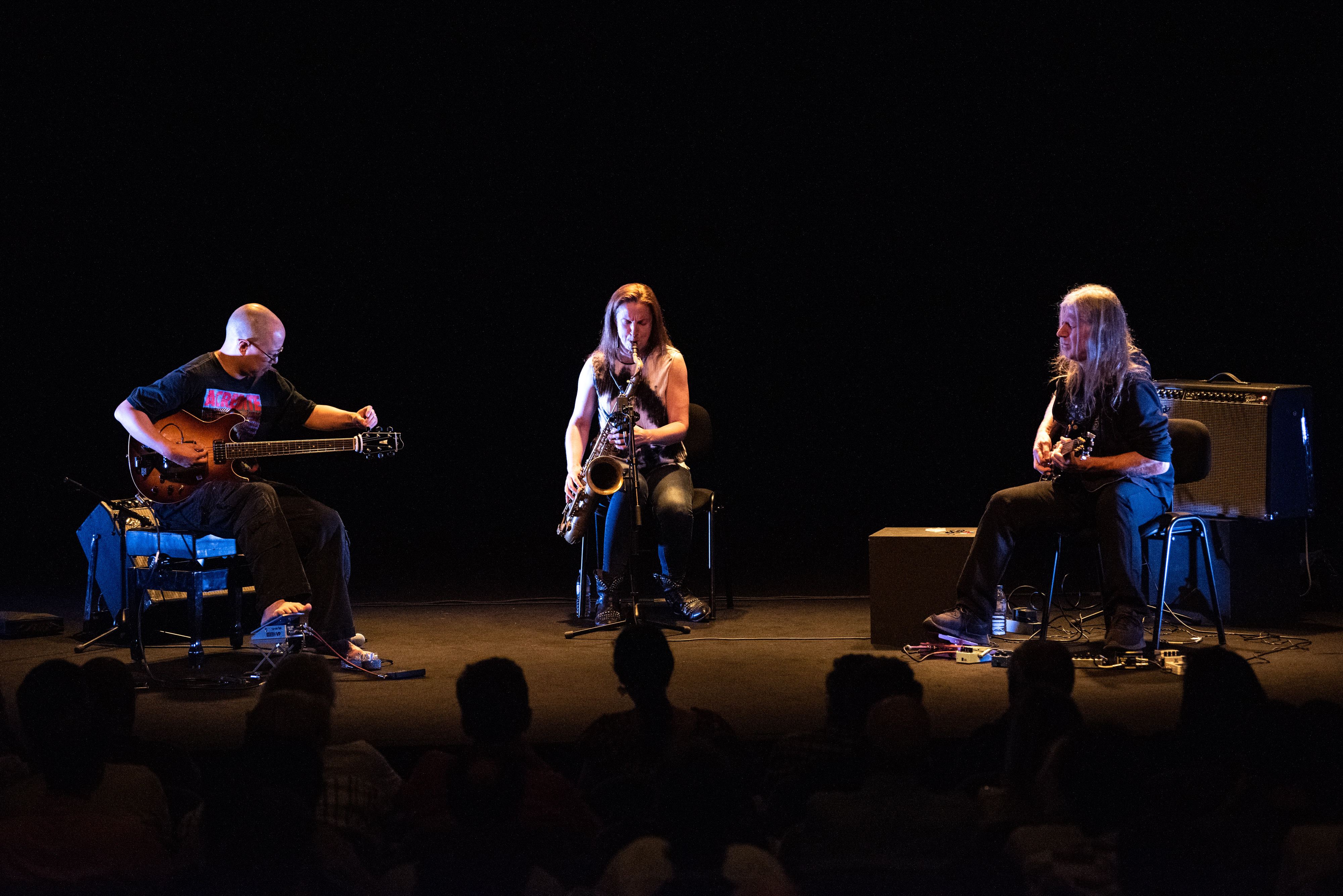
Eris 136199
Eris 136199 plays on the crossroads of noise, melody, rhythm, space, density, contrast, synchronicity, asymmetry, serendipity and contradiction. Eris 136199 is the corporeal, cyborg virtuosity of constructor and guitarist Han-earl Park; the noisy, unruly complexity of composer, computer artist and guitarist Nick Didkovsky; and the no-nonsense melodic logic of composer and saxophonist Catherine Sikora.
Han-earl Park is the instigator and mastermind behind Eris 136199, as well as groups including Sirene 1009 with Dominic Lash, Mark Sanders and rit., and co-conspirator in projects with Richard Barrett and others. Park is the constructor of the machine improviser io 0.0.1 beta++, and of Metis 9, a playbook of improvisative tactics. He has performed with Wadada Leo Smith, Paul Dunmall, Evan Parker, Lol Coxhill, Josh Sinton, Louise Dam Eckardt Jensen, Ingrid Laubrock, Gino Robair, Tim Perkis, Andrew Drury, Pat Thomas and Franziska Schroeder. His ensembles have performed at festivals including Freedom of the City (London), Brilliant Corners (Belfast), ISIM (New York), CEAIT (Los Angeles) and Sonic Acts (Amsterdam).
Saxophonist, improviser and composer Catherine Sikora, known for her big sound and lyrical melodic work, works as a solo performer and with Eric Mingus, Enrique Haneine, Brian Chase, Han-earl Park, Ethan Winogrand, Christopher Culpo and Ross Hammond. In recent years Sikora has toured in Canada, the United States, Europe and Australia. She was a featured soloist in Eric Mingus’ radical reimagining of Tommy by the Who (Adelaide Festival 2015), and was artist in residence at the Centre Culturel Irlandais in Paris in 2014 and in 2020.
Guitarist, composer, and computer music programmer Nick Didkovsky has composed music for Kathleen Supové, ETHEL, Bang on a Can All-Stars, Meridian Arts Ensemble, New Century Players, ARTE Quartett, as part of the Fred Frith Guitar Quartet, and his own bands Doctor Nerve, Vomit Fist, Häßliche Luftmasken, and others. His compositions and guitar performances appear on more than 50 records. For over 30 years, his avant-metal big band Doctor Nerve has fueled Didkovsky’s intricate compositions with the energy of rock, punching holes through the walls between heavy metal, contemporary music, and improvisation, and performing at festivals including Moers, FIMAV, and the Whitney Museum’s ‘Whitney Live.’ With computer music pioneer Phil Burk, Didkovsky developed the computer music language Java Music Specification Language (JMSL).
personnel
Han-earl Park (guitar), Catherine Sikora (saxophone), and Nick Didkovsky (guitar).
track listing
Let 𝑿 (7:56), Problematica I.ii (remastered) (8:34). Total duration: 16:30.
recording details
Music by Han-earl Park, Catherine Sikora and Nick Didkovsky.
Track 1 recorded March and April 2022, New York and Berlin.
Track 2 recorded live November 4, 2017, The Bless, Derby.
Recorded by Eris 136199 (track 1), and by Chris Trent (track 2).
Mixed by Han-earl Park.
Mastered by Chris Sharkey.
Artwork by Han-earl Park with Catherine Sikora and Nick Didkovsky.
Special thanks to Corey Mwamba and Chris Trent. Derby performance presented by Corey Mwamba/OUT FRONT!, and with the awesome support of our Kickstarter backers. Track 2 includes material previously released on the limited edition album Problematica (2018).
© + ℗ 2022 Han-earl Park.
Also by Eris 136199

Peculiar Velocities (BAF002) [details…]
Personnel: Han-earl Park (guitar), Catherine Sikora (saxophone) and Nick Didkovsky (guitar).
Track listing: Ballad of Tensegrity I (≥ 5:12), Ballad of Tensegrity II (2:28), Peculiar Velocities I (3:46), Peculiar Velocities II (3:36), Sleeping Dragon (5:22), D-Loop I (≥ 6:16), D-Loop II (5:13), Polytely I (≥ 5:01), Polytely II: Breakdown (5:33), Anagnorisis I (2:09), Anagnorisis II (2:19). Total duration ≥ 46:54.
© + ℗ 2020 Han-earl Park.

Eris 136199 (BAF001) [details…]
Personnel: Han-earl Park (guitar), Catherine Sikora (saxophone) and Nick Didkovsky (guitar).
Track listing: Therianthropy I (≥ 3:43), Therianthropy II (8:56), Therianthropy III (3:55), Therianthropy IV (6:30), Adaptive Radiation I (6:44), Adaptive Radiation II (8:48), Adaptive Radiation III (5:54), Universal Greebly (10:58), Hypnagogia I (8:03), Hypnagogia II (4:45). Total duration ≥ 68:25.
© + ℗ 2018 Han-earl Park.

Anomic Aphasia (SLAMCD 559) [details…]
Personnel: Han-earl Park (guitar), Catherine Sikora (tenor and soprano saxophones), Nick Didkovsky (guitar; tracks 1 and 5), and Josh Sinton (baritone saxophone and bass clarinet; tracks 2–4).
Track listing: Monopod (27:19), Pleonasm (Metis 9) (17:08), Flying Rods (Metis 9) (7:41), Hydraphon (7:34), StopCock (10:54). Total duration: 70:33.
© 2015 Han-earl Park. ℗ 2015 SLAM Productions.
Work in progress…
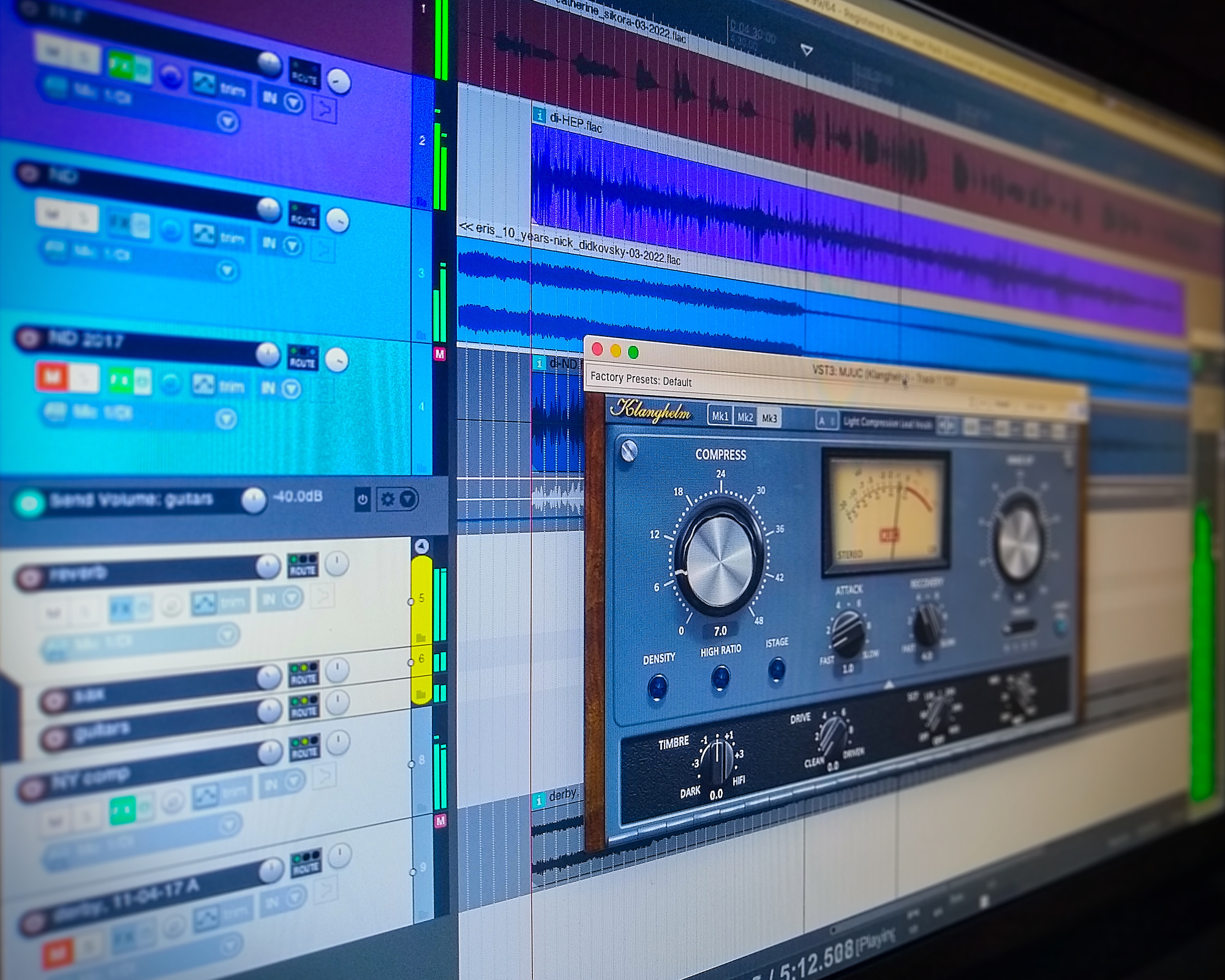
Want to know more? Sign-up now to my newsletter to keep up-to-date.
Also by Eris 136199

Peculiar Velocities (BAF002) [details…]
Personnel: Han-earl Park (guitar), Catherine Sikora (saxophone) and Nick Didkovsky (guitar).
Track listing: Ballad of Tensegrity I (≥ 5:12), Ballad of Tensegrity II (2:28), Peculiar Velocities I (3:46), Peculiar Velocities II (3:36), Sleeping Dragon (5:22), D-Loop I (≥ 6:16), D-Loop II (5:13), Polytely I (≥ 5:01), Polytely II: Breakdown (5:33), Anagnorisis I (2:09), Anagnorisis II (2:19). Total duration ≥ 46:54.
© + ℗ 2020 Han-earl Park.
In between chaos and composure (reviews and best of 2021: Of Life, Recombinant)
I feel blessed and enormously privileged to find Of Life, Recombinant (NEWJAiM9) among the year’s end ‘best of’ lists. Selecting my album for aJazzNoise’s picks-of-2021, Dave Foxall writes:
Han-earl Park digs deep into techniques and sounds and presents a fresh palette for the guitar. Pyrotechnics abound, but not in any kind of traditional sense. [Read the rest…]
Plus, with the inclusion of Catherine Sikora’s corners (“absorbing, pushing against and playing off the natural reverb”), and Nick Didkovsky’s CHORD IV, aJazzNoise’s selection almost like an informal Eris 136199 reunion!
Keith Prosk also chooses Of Life… for his Top 10 at Free Jazz, and in his review at harmonic series, Prosk writes of a music that “explores and rearranges material, or things whose characters seem similar though never the same, through its durations”:
Along with what’s kept there is always something left and something new. The country twang tune with popping harmonics from ‘Naught Opportune.’ The unsettling mandolinesque trill or quivering sustain in hazy delay from ‘Are Variant.’ The distorted suck, psychedelic and ecstatic, in slow crescendo from ‘Of Life, Recombinant.’ In its representation of real-time activity that ruminates on its material, it is as if it provides a glimpse into the improvising process, whose hushed reality of painstaking practice might often be misinterpreted as something closer to strokes of inspiration out of the ether. In between chaos and composure, it is something closer to the complexity of life. [Read the rest…]
And I’m super proud to find my album on Avant Music News’ Best of 2021. As Mike Borella previously wrote:
Park’s approach changes, from jangling notes, to ambient passages, to twangy folk themes, to long-held chords. In doing so, he incorporates extended techniques into more conventional practices to the point where the former guide and direct the latter. [Read the rest…]
[About this album…] [Get the CD/download from NEWJAiM (Bandcamp)…] [All reviews…]
The perfect distillation of uneasy listening (reviews: Peculiar Velocities and Of Life, Recombinant)
Eris 136199: Peculiar Velocities
Grunting tonal bursts? atmospherics? weaving sinuous melody? In his review of Eris 136199’s Peculiar Velocities, Paul Acquaro at Free Jazz describes a “masterful slice of trifurcated dialog” by turns “haunting, gracious and grating”, with tones that cut “like an exacto-blade.” He writes that, by the third track (‘Peculiar Velocities I’) of the album:
The guitars have adopted a slightly different aesthetic, using choppy, brittle sounds, they lay down a fractured soundscape replete with sonic barbs and suspended tones. Sikora finds her footing on this shifting ground and plays freely. As the track continues into ‘Peculiar Velocities II’ the fascinating part is realizing how connected the three actually are: this is not parallel play, rather it connects deep in the sub-systems. [Read the rest…]
Meanwhile Todd McComb’s Jazz Thoughts finds “vignettes within an overall urban fantasy soundscape”, and according to Ed Pinsent at The Sound Projector:
This music does stem from a knowledge and practice of free improvisation, and can fit inside various ‘art music’ categories, but on one level to me it feels as good as any ‘noise rock’ served up by Sonic Youth, The Dead C, or any new-wave influenced beat combo who tend to attract the ‘angular’ adjective. [Read the rest…]
Having previously selected Peculiar Velocities as one of the Best of 2020, Dave Foxall writes in aJazzNoise that:
It’s mind-twisting stuff. Intensely ‘musical’ (whatever that means) and harshly jarring, gently testing Broca’s convolutions, seeking points of entry and storage, delicately inserting sounds, probing for reaction, disconcertion and delight. (i.e. It gets inside your head)….
An uncomfortable joy, a can’t-be-reproduced-in-the-laboratory combination of rare elements, a new musical alloy, an ongoing experiment, the perfect distillation of uneasy listening. [Read the rest…]
[About this album…] [Get the CD/download (Bandcamp)…] [All reviews…]
CD: €11 minimum (‘name your price’) plus shipping.*†
Download: €8 minimum (‘name your price’).†
* Limited edition glass-mastered CD. CD includes additional material (liner notes, artwork, etc.) not included in the download version of the album.
† Both digital and physical purchases give you streaming via the free Bandcamp app, and option to download the recording in multiple formats including lossless.
Of Life, Recombinant
And finally, in his LondonJazz News review of Of Life, Recombinant, Tony Dudley-Evans describes a music of ‘industrial sounds,’ by turns ‘ambient’ and ‘dramatic,’ with elements of minimalism. Plus:
Sinister sounds reminiscent of a hospital MRI scanning machine. [Read the rest…]
[About this album…] [Get the CD/download from NEWJAiM (Bandcamp)…] [All reviews…]
Lumbering 30 kilogram box of wood, metal, glass, paper, fabric, plastic and 1960s over-engineering
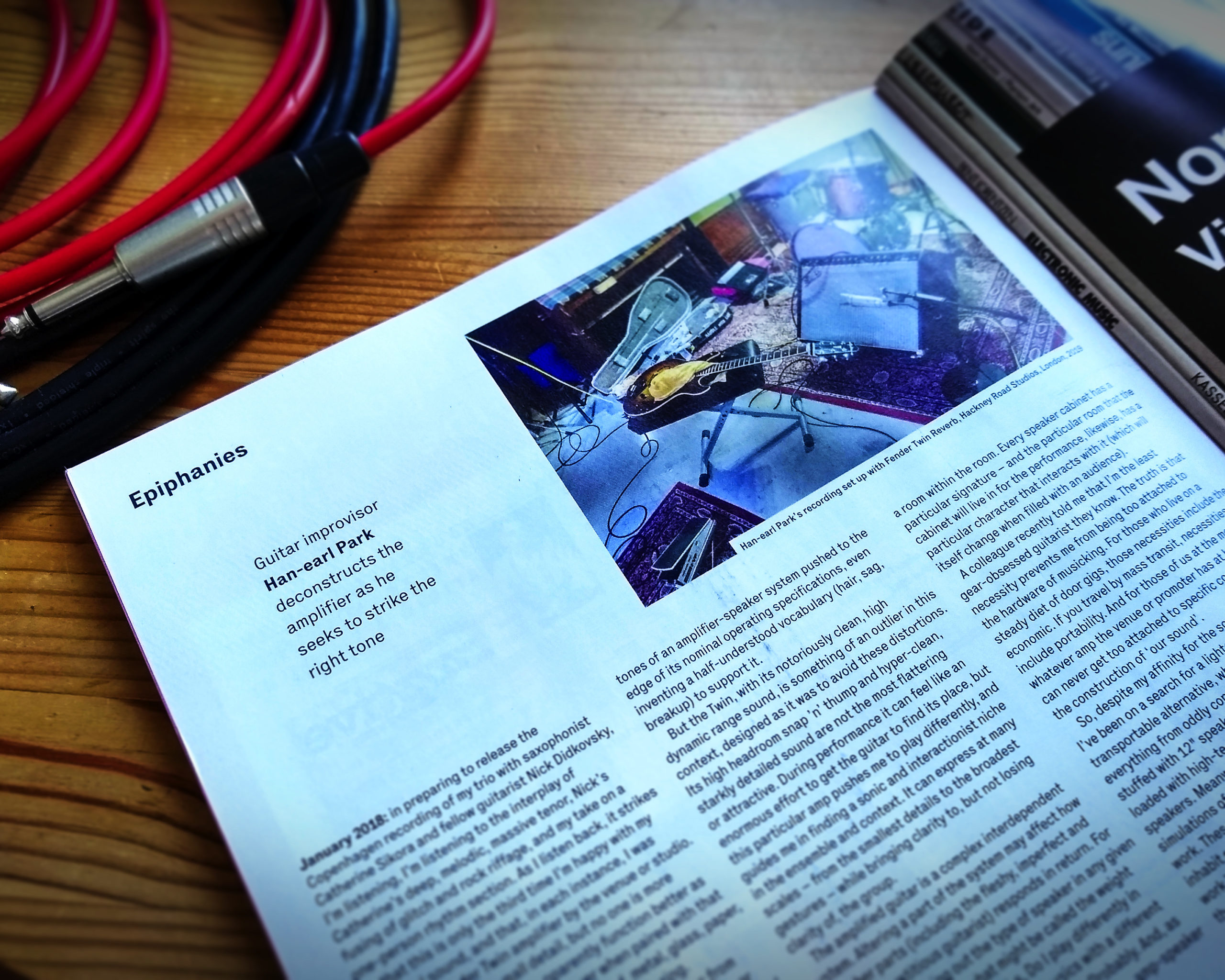
In case you missed it, I wrote a short piece for the June edition of The Wire (issue 448) in which I muse about speaker cabinets, cyborgs, simulations, rooms-within-rooms, and the superstitions surrounding, and genre markers of ‘tone’:
All instrument-instrumentalists are cyborg creatures in which musical gestures and behaviours emerge from the collision of minds, bodies and artifacts; of physics, physiology, technology and culture. One peculiarity in the case of the amplified instrument-instrumentalist is the particular way this cyborg is exploded in space, spilling its components and organs across the stage. The guitar-guitarist may sit on one side of the stage, while the amp sits some distance away. It’s freakish, as if, say, a violin’s soundbox had severed itself from the rest of the instrument and crawled across the stage.
The speaker cabinet plays a curious part in this cyborg dance. The cabinet is both the sounding part of the instrument, an externalized soundbox removed from the tactile interface of the instrument, while also functioning as a room within the room. Every speaker cabinet has a particular signature, a particular character, and the particular room that the cabinet will live in for the performance, likewise, has a particular character that interacts with it (which will itself change when filled with an audience).
You can read the rest in the June issue of The Wire.
Recordings Discussed

Peculiar Velocities (BAF002) [details…]
Personnel: Han-earl Park (guitar), Catherine Sikora (saxophone) and Nick Didkovsky (guitar).
Track listing: Ballad of Tensegrity I (≥ 5:12), Ballad of Tensegrity II (2:28), Peculiar Velocities I (3:46), Peculiar Velocities II (3:36), Sleeping Dragon (5:22), D-Loop I (≥ 6:16), D-Loop II (5:13), Polytely I (≥ 5:01), Polytely II: Breakdown (5:33), Anagnorisis I (2:09), Anagnorisis II (2:19). Total duration ≥ 46:54.
© + ℗ 2020 Han-earl Park.

Eris 136199 (BAF001) [details…]
Personnel: Han-earl Park (guitar), Catherine Sikora (saxophone) and Nick Didkovsky (guitar).
Track listing: Therianthropy I (≥ 3:43), Therianthropy II (8:56), Therianthropy III (3:55), Therianthropy IV (6:30), Adaptive Radiation I (6:44), Adaptive Radiation II (8:48), Adaptive Radiation III (5:54), Universal Greebly (10:58), Hypnagogia I (8:03), Hypnagogia II (4:45). Total duration ≥ 68:25.
© + ℗ 2018 Han-earl Park.

